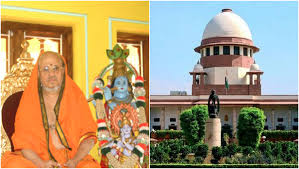Birla Corporation Ltd. through its Managing Director vs. Bhanwar Singh
Citation: 2024 INSC 35; S.L.P.(C) No. 21211 of 2012 (and connected matters); 2024 LiveLaw (SC) 38
Bench: Justice Sanjiv Khanna, Justice S.V.N. Bhatti
Background
This case concerned the environmental protection of the historic Chittorgarh Fort in Rajasthan, a UNESCO World Heritage Site. Birla Corporation Ltd., which operates limestone mines near the fort, challenged restrictions and directions imposed by the Rajasthan High Court and local authorities regarding mining and blasting activities within a 5 km radius of the fort. The respondents, including Bhanwar Singh and other local stakeholders, argued that unchecked mining and blasting posed a serious threat to the structural integrity and preservation of the fort.
Supreme Court’s Analysis
Precautionary Principle and Heritage Protection:
The Supreme Court applied the precautionary principle, emphasizing that the preservation of cultural heritage sites like Chittorgarh Fort is of paramount public interest. The Court acknowledged the fort’s historical and architectural significance and the need for stringent safeguards against any activity that could endanger its stability or cause irreversible damage.
Scientific Assessment and Blasting Ban:
The Court noted that there was credible expert evidence suggesting that blasting for mining purposes could potentially harm the fort’s structures. Accordingly, the Court upheld a prohibition on all blasting activities within a 5 km radius of the fort, pending a comprehensive scientific study to assess the actual impact of such activities.
Directions for Study and Monitoring:
The Supreme Court directed that a detailed scientific study be conducted by an expert body to evaluate the effects of mining and blasting on the fort. The expenses for this study were to be borne by Birla Corporation Ltd. The Rajasthan government and State Pollution Control Board were authorized to halt blasting operations immediately if the study revealed unexpected or serious damage, without waiting for further court orders.
Balance Between Development and Conservation:
While recognizing the importance of industrial activity and mineral extraction for economic development, the Court held that such interests must yield to the imperative of protecting national heritage. The Court stressed that environmental and cultural conservation must take precedence when there is a risk of irreversible harm.
Decision
The Supreme Court affirmed the ban on blasting within a 5 km radius of Chittorgarh Fort and mandated a scientific study to determine the extent of risk. It empowered state authorities to act swiftly in the event of any threat to the fort, prioritizing heritage protection over commercial interests.
Significance
This judgment reinforces the judiciary’s commitment to safeguarding India’s cultural and historical heritage, clarifies the application of the precautionary principle in environmental law, and sets a precedent for balancing economic activity with the preservation of irreplaceable public assets.






























0 comments